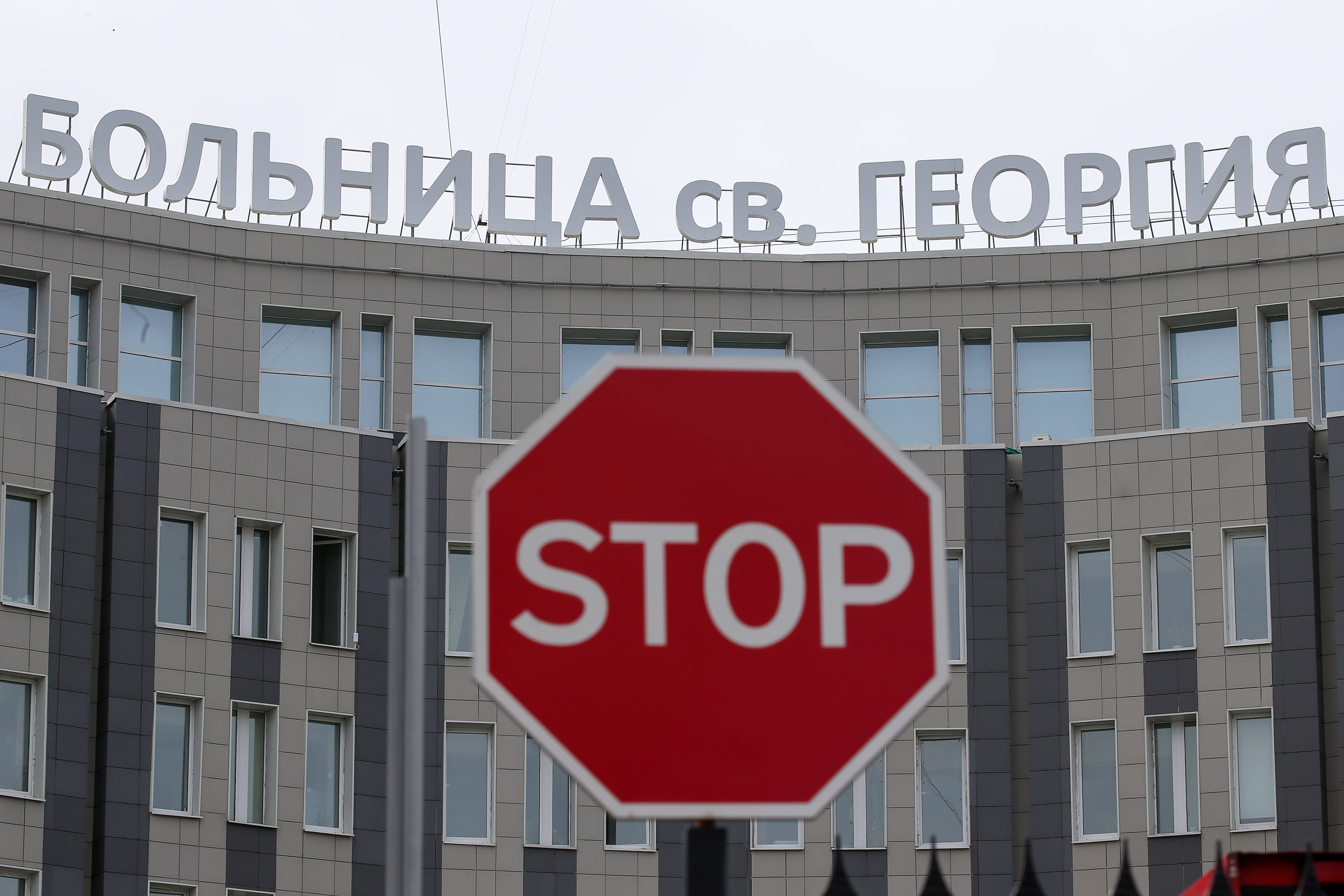A view of St George’s Municipal Hospital after a fire, five patients dead on ventilator support in the intensive care unit. The hospital was one of the first in St Petersburg to be repurposed as a medical centre to treat infectious diseases like pneumonia, including that caused by the novel coronavirus.
Peter Kovalev
The U.S. has said it will not use the Russian ventilators sent to it by Moscow while an investigation is carried out into their safety, following a deadly hospital fire in St. Petersburg on Tuesday.
The U.S. Federal Emergency Management Agency (FEMA) told CNBC Wednesday that it would not start using the “Aventa-M” ventilators after they were cited as the possible cause of a fire in the St. George Hospital, in St. Petersburg, that killed five patients with Covid-19.
The victims were in an intensive care unit and on ventilators at the time of the incident, Russian news agencies reported; 150 other people were evacuated from the hospital. Sources at the hospital were reported as saying that the fire could have been caused by one of the these ventilators short-circuiting.
The St. Petersburg hospital fire follows a similar incident last Saturday in a hospital in Moscow that was also treating coronavirus patients and also using the same model of ventilator; the fire last week killed one and forced hundreds of others to evacuate.
Russia has now suspended the use of Aventa-M ventilators throughout the country, Russia’s health-care regulator Roszdravnadzor confirmed Wednesday. It said Aventa-M ventilators were used to provide medical care to patients at both the Moscow and St. Petersburg hospitals.
FEMA, an agency of the U.S. Department of Homeland Security, confirmed to CNBC that the same model of ventilator had been sent to the U.S. from Russia in early April, during a scramble for medical equipment as the coronavirus pandemic raged in the New York area.
“At the beginning of April, Russia sent a shipment of medical supplies, including Aventa M ventilators, to the U.S.,” a FEMA spokesman told CNBC.
“At the time, a severe ventilator shortage was projected in New York (NY) and New Jersey (NJ), so the ventilators were delivered to warehouses owned by the two states.”
The spokesman said that a flattening of the infection curve meant the ventilators were not needed, but were held in reserve in case the situation worsened. “The ventilators have not been deployed to hospitals,” he added.
FEMA told CNBC that ”out of an abundance of caution, the states are returning the ventilators to FEMA” and added that “the conclusion(s) of the investigation being conducted by the Russian authorities into the fire in St. Petersburg will help inform our decision regarding any future use of the ventilators.”
Controversial cargo
The sending of ventilators from Russia to the U.S. was initially controversial because the equipment was manufactured by a subsidiary of a Russian company that was subject to U.S. sanctions, NBC News reported.
The cargo (which Russia billed as “humanitarian aid” to the U.S.) was also criticized as a cynical move by Moscow to help the U.S. in return for a relaxation of sanctions.
However, the State Department said in a statement at the time that it had paid for the cargo of equipment. Russia said that the cost of the cargo was split 50/50 — with half paid for by the U.S., and half paid for by the Russian Direct Investment Fund, Moscow’s sovereign wealth fund, NBC News said.
A Russian Aerospace Forces plane carrying medical equipment has landed at John F. Kennedy International Airport. Russian President Vladimir Putin and US President Donald Trump discussed the details on the phone on March 30, 2020, Russia offered help amid the coronavirus situation in the U.S.
TASS
While an investigation into the recent fire is carried out, it’s impossible to say whether the Aventa-M ventilator played any role in the tragedy.
However, Russian news agencies Tass and RIA Novosti both cited sources, and the emergency services, as noting that the the cause of the incident could have been a malfunction of electrical equipment, including a ventilator.
“The ventilators were being pushed to their limits. Our preliminary information suggests there was an overload and the equipment caught fire, which set off the fire,” one source told Interfax news agency.
Russia’s Prosecutor General’s Office said Tuesday that it was working to establish the causes and conditions for the fire and would assess whether fire safety requirements were complied with.
Workers of the St Petersburg Fire Service have put out a fire at St George’s Municipal Hospital, five patients dead on ventilator support in the intensive care unit. The hospital was one of the first in St Petersburg to be re-purposed as a medical center to treat infectious diseases like pneumonia, including that caused by the novel coronavirus (COVID-19).
Emercom
Russia is currently dealing with a rampant coronavirus outbreak that has put the country’s health-care system under pressure. Russia now has the second-highest number of coronavirus cases in the world after the U.S., with 232,243 confirmed cases, according to Johns Hopkins University data. The official death tow remains low, however, at 2,116.
